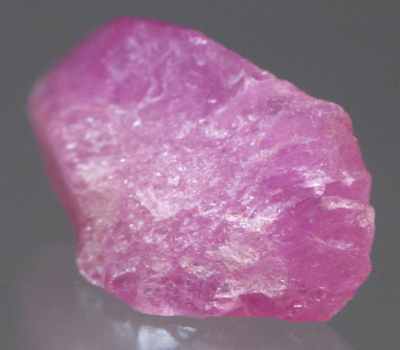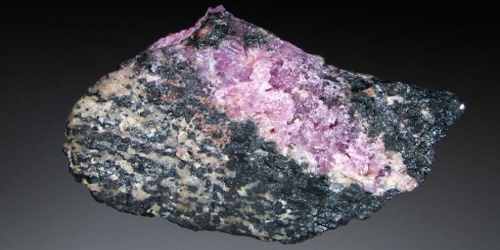Hodgkinsonite is a rare zinc manganese silicate mineral Zn2MnSiO4(OH)2. It is a rare monoclinic zinc manganese silicate mineral, having a pink, red, or yellow-red color. The stones have been small, the colors are bright pink and lavender.
Hodgkinsonite was discovered in 1913 by H. H. Hodgkinson, for whom it is named in Franklin, New Jersey, and it is only found in that area.
General Information
- Category: Nesosilicate
- Formula: Zn2MnSiO4(OH)2
- Crystal system: Monoclinic
- Crystal class: Prismatic (2/m) (same H-M symbol)

Fig: Hodgkinsonite
Properties
Hodgkinsonite is a very attractive mineral and has even been cut as a gemstone. It has a bright pink to lavender color that is similar to rhodonite but not quite as red. It crystallizes in the monoclinic system and typically forms radiating to acicular prismatic crystals with variable color from pink, yellow-red to deep red.
- Mohs scale hardness: 4.5 – 5
- Optical properties: Biaxial (-)
- Color: Light pink, Orange, Reddish brown.
- Density: 3.91
- Diaphaneity: Translucent to subtranslucent to opaque
- Luminescence: Fluorescent, Long UV=red, weak pink dull dark purple.
- Luster: Vitreous (Glassy)
Occurrence: As seams in massive willemite-franklinite granular ore in metamorphosed stratiform zinc deposit (Franklin, New Jersey, USA).
Hodgkinsonite is a rare mineral that occurs only at its type locality as seams in the massive willemite-franklinite ore in the metamorphosed stratiform zinc deposit.
Association: Barite, willemite, franklinite, tephroite, pyrochroite, calcite, manganoan garnet, copper
It is most known for its association with snow-white barite crystals in veins that cut through the ores composed of willemite and franklinite. It has even been associated with native copper.
Information Source:
















